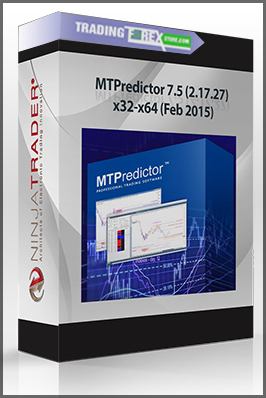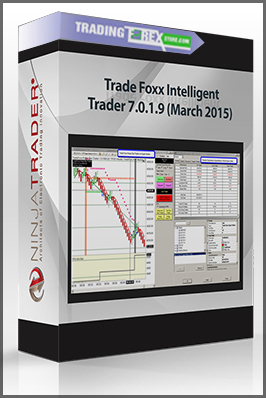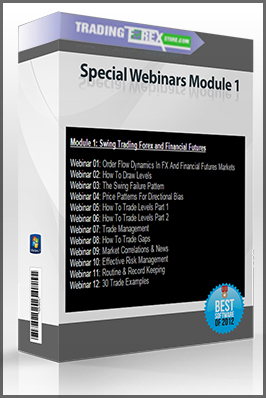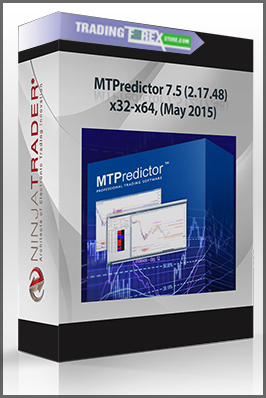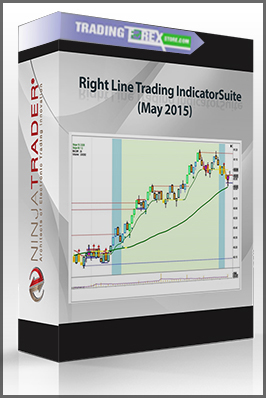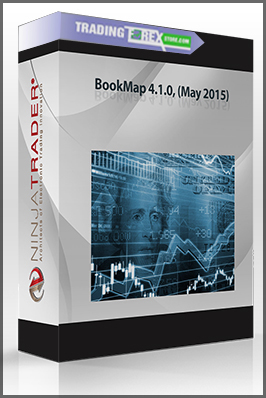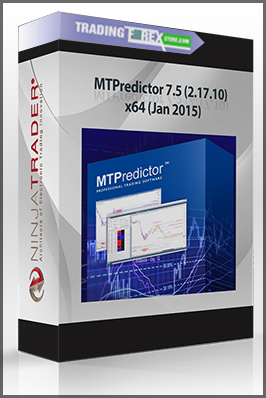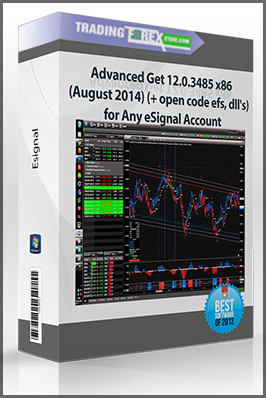2003 Master Class by Gerald Appel
$85.00
Product Include:
File size:
- Description
Description
2003 Master Class by Gerald Appel
**More information:
Get 2003 Master Class by Gerald Appel at bestoftrader.com
Product Description
Master Class with Gerald Appel
at the January 2003 Caribbean Traders’ Camp
Session 1
Market Indices and Chart Formations
1. NASDAQ Composite and Current Volatility
2. The Long Term Moving Average Channel of NASDAQ
3. MACD Patterns of the S & P 500 Threatening to Break Long Term Downtrend
4. NASDAQ /NYSE Index Relative Strength Favors Nasdaq – Bullish
5. Bullish and Bearish Chart Patterns 1
6. Bullish and Bearish Chart Patterns 2
7. Angle Changes
8. T-formations
9. NASDAQ Composite T-Formations
10. Andrew’s Pitchfork
Session 2
Moving Average Convergence-Divergence
1. Illustration of MACD Concept
2. Introducing the Signal Line
3. The Basic Buy and Sell Signal
4. Using Divergences to Recognize the Reliable Signals
5. Further Examples of Divergences
6. Comparing MACD to a Price Momentum Oscillator
7. Comparison of MACD and RSI
8. Different MACD’s for Buy and Sell Signals
9. MACD during a Strong Market Uptrend
10. MACD during a Strong Downtrend
11. Treasury Bonds, MACD, and a Strong Uptrend
12. The Stop-loss Signal for an Unsuccessful Trade
13. Using Trendlines to Confirm Buy and Sell Signals
14. Long-Term MACD Signals – The Start of a Bull Market
15. A Long Bull Market – Then the Crash
16. Using Monthly MACD to Define Very Major Trends
17. Using Time Cycles to Confirm MACD Signals
18. Using Time Cycles – 2nd Example
19. When MACD Does Not Provide Timely Signals
20. Four Stages of MACD and the Market Cycle
21. The 1998 Bottom
22. A Bull and then a Bear Market
23. Catching the Lows – the 1984 bottom
24. A Second Example of Bottom Finding
25. A Final Example of Bottom Finding
26. Bear Market Rally, 2001 – 2002
Session 3
Riding the Market: Strategies to Stay on the Right Side of Market Trends
1. Summary
2. Drawdown Illustrated
3. Some Risk-Adjusted Performance Measures (Higher = Better)
4. “Normal” Risks for Various Investments (not worst cases)
5. Basic Risk Control Strategies
6. Core Portfolio – Designed to Minimize 1–year Losses
7. Four Parts of the Portfolio
8. Core Portfolio Performance History
9. Minimum Risk Portfolio
10. Core Portfolio at Vanguard
11. Core Portfolio with ETF’s
12. Concept of Relative Strength
13. Example of Relative Strength Analysis: NYSE Composite Rises Faster when NASDAQ is Strong
14. Large Cap Value/Growth Model
15. SVX Divided by SGX (monthly)
16. Performance of SVX/SGX Model since 1994
17. Average Performance of Large Cap Value Mutual Funds vs. Large Cap Growth Mutual Funds since 1962
18. Large Cap Value Divided by Large Cap Growth
19. Large Cap versus Small Cap Model
20. S & P 500 Divided by S & P 600 (monthly)
21. Performance of S & P 500/SML Model since 1995
22. S & P 500 Index vs. Average Small Cap Mutual Funds since 1979
23. S & P 600/Cash Timing Model Rules
24. S & P Small Cap/Cash Timing Model
25. S & P 600/Cash Model Results
26. Interest Rates and Stocks
27. Stocks and Interest Rates
28. Results: Rates and Stocks, 1962 – 2002
29. Avoid Sales Loads
30. How is Your Fund Doing?
31. Mutual Funds vs S & P 500
Session 4
Four Presentations
A – Analyzing the Stock Market with Moving Average Trading Bands
1. Basic Concept of Moving Average Trading Channel
3. Different Phases within the Moving Average Trading Channel (NASDAQ Composite, Daily)
3. Different Phases within the Moving Average Trading Channel (NYSE Composite, monthly)
4. Long-Term Weekly Chart –NYSE Index 21-Week Average, 6% bands
5. Moving Average Channels in a Flat Market Period – 1991-1992
B – Volatility Peaks and Major Market Bottoms
6. The NASDAQ Composite and Historical Volatility, 1970 – 1979
7. The NASDAQ Composite and Historical Volatility, 1980-`1989
8. The NASDAQ Composite and Historical Volatility, 1990-1999
9. The NASDAQ Composite and Historical Volatility,2000-2002
10. Peak Volatility, Subsequent Market Movement
C – The 4 Pillars of Investment Success – Long-Term Growth with Greater Safety
11. Investment Strategies for Uncertain Times
12. Why Safer Stock Funds Work Better
13. Avg % Gain in Winning Months – Avg % Loss in Losing Months Based on Volatility Groups
14. Gain Per Year, Based on Volatility Groups – 20 Years
15. Closed Drawdowns Based on Volatility Groups
16. Fund Rotation Strategy – Performance by Performance Rank
D – The Power of NASDAQ
17. NASDAQ Composite – NASDAQ/NYSE Minus 10 Week Moving Average, 1970-1973
18. NASDAQ Composite – NASDAQ/NYSE Minus 10 Week Moving Average, 1980-1984
19. NASDAQ Composite – NASDAQ/NYSE Minus 10 Week Moving Average, 1997-2002
20. NASDAQ Composite When NASDAQ is Dominant vs. NASDAQ buy and Hold – NYSE Composite When NASDAQ is Dominant vs. NASDAQ buy and Hold
21. NASDAQ Relative Strength Summary
22. Relative Strength with Intermediate Monetary Filter
Forex Trading – Foreign Exchange Course
You want to learn about Forex?
Foreign exchange, or forex, is the conversion of one country’s currency into another.
In a free economy, a country’s currency is valued according to the laws of supply and demand.
In other words, a currency’s value can be pegged to another country’s currency, such as the U.S. dollar, or even to a basket of currencies.
A country’s currency value may also be set by the country’s government.
However, most countries float their currencies freely against those of other countries, which keeps them in constant fluctuation.





